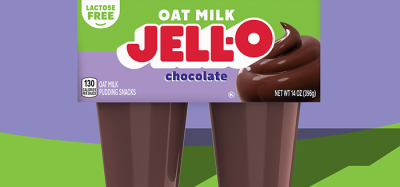Decoding the natural product demand puzzle
- Like
- Digg
- Del
- Tumblr
- VKontakte
- Buffer
- Love This
- Odnoklassniki
- Meneame
- Blogger
- Amazon
- Yahoo Mail
- Gmail
- AOL
- Newsvine
- HackerNews
- Evernote
- MySpace
- Mail.ru
- Viadeo
- Line
- Comments
- Yummly
- SMS
- Viber
- Telegram
- Subscribe
- Skype
- Facebook Messenger
- Kakao
- LiveJournal
- Yammer
- Edgar
- Fintel
- Mix
- Instapaper
- Copy Link
Posted: 5 December 2023 | Almond Board of California | No comments yet
Data shows there’s growing consumer demand for natural foods, but despite many attempts to clarify what ‘natural’ means, to consumers and to the industry, there’s still much confusion. Applied Futurist Tom Cheesewright explores what consumers are actually looking for when it comes natural and how ingredients like almonds can help manufacturers.


Futurist Tom Cheesewright believes that there is rising consumer demand for ‘natural’ foods with many different factors driving this desire. Firstly, consumers’ health consciousness has been amplified by the impact of the pandemic, with many consumers looking to support specific health concerns such as gut health or heart health.
There’s also been a large amount of conversation around processed foods which has made consumers more aware of how their food is made. Finally, all of this is happening in an era of heightened environmental awareness which has been amplified by the radical shifts in weather we’ve seen over the summer. He highlights that whilst it’s clear that consumers are seeking out natural foods as a response to all of this, it’s unclear what exactly they are looking for.
Defining natural
When it comes to defining what is meant by natural foods, is probably easier to say what it isn’t. Cheesewright notes that “Natural is not your hippy whole food store of the 70s and 80s.
When we’re looking for natural food, it isn’t defined by a single shop, or even an aisle. It’s not defined by a label or certification. Yes, there are industry standards, awards and badges, and these are important markers, but research suggests these have a limited impact on consumer behaviour.”1
According to Cheesewright, for some natural could mean clean label, but to others it could mean sugar free. Some consumers may be seeking products which cater specifically to certain wellness benefits and others may be looking for those which support their desire for a more sustainable lifestyle. We’re not only seeing these different definitions of natural on the consumer side, but with products as well.
For example, Deliciously Ella’s Roasted Almond Trail Mix Bars in the UK define themselves as “all natural” due to their clean label ingredients, whereas Fruut in Portugal claims its Dried Apple, Almonds and Coconut Mix is “100%= percent natural” as it has no added sugar.
This can be challenging for brands and food manufacturers who want to develop products which meet consumers’ demand for natural.
Ticking all the boxes
Cheesewright also highlights that product developers need to accept the ‘fuzzy nature’ of consumers’ understanding of natural products and market products appropriately. “Manufacturers need to understand the factors that contribute to consumers’ perception of natural and tick as many as they can in an honest and transparent way. Most importantly, they should create products that tell stories using as many of these factors as possible. For example, how will it support wellness concerns, does it have a strong sustainability story and so on.” Choosing ingredients which can support these stories, such as almonds, which can help with multiple, is key for manufacturers.
Harbinder Maan, Associate Director of Trade Marketing and Stewardship at the Almond Board of California, comments: “Almonds tick many of the boxes that consumers associate with natural. In terms of wellness benefits, they are one of the world’s most researched foods with over 200 scientific publications to date evidencing their positive impact on a variety of health concerns including heart health, gut health, cognitive function, weight management and skin health.
“They can also support manufacturers looking to align with consumers’ sustainability priorities – California almond farmers are doing everything they can to reduce their impact on the environment with sustainability initiatives across zero-waste, water efficiency, pest management and air quality.”
Cheesewright concludes: “The answer to natural doesn’t come from any one factor, but rather a story of multiple factors told together.”
With many aspects of a product lending themselves to its “natural” image, manufacturers can feel confident that almonds can add value and support storytelling as a responsibly-grown, nutritious and versatile ingredient.
References
- https://www.food.gov.uk/sites/default/files/media/document/Consumer%20Responses%20to%20Food%20Labelling_1_0.pdf
Biography
Tom Cheesewright is the Applied Futurist, helping people and organisations around the world to see the future more clearly, share their vision, and respond with innovation. Tom will help you and your audience to connect tomorrow’s world to today’s experience, and make sense of what’s happening next, and why. Tom’s clients include global 500 corporations, government departments, industry bodies and charities. Using a unique set of tools that he developed, and now teaches and licences to others, Tom finds the critical intersections between today’s macro trends and the existing stresses in each client’s organisation and sector.
About the Almond Board of California
Almonds from California are a natural, wholesome, and quality food. The Almond Board of California
promotes almonds through its research-based approach to all aspects of marketing, farming, and
production on behalf of the more than 7,600 almond growers and processors in California, many of
whom are multi-generational family operations. Established in 1950 and based in Modesto, California, the Almond Board of California is a non-profit organization that administers a grower-enacted Federal Marketing Order under the supervision of the United States Department of Agriculture. For more information on the Almond Board of California or almonds, visit Almonds.com or check out California Almonds on Facebook, Twitter, Pinterest, Instagram and the California Almonds blog.









